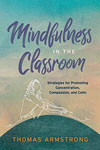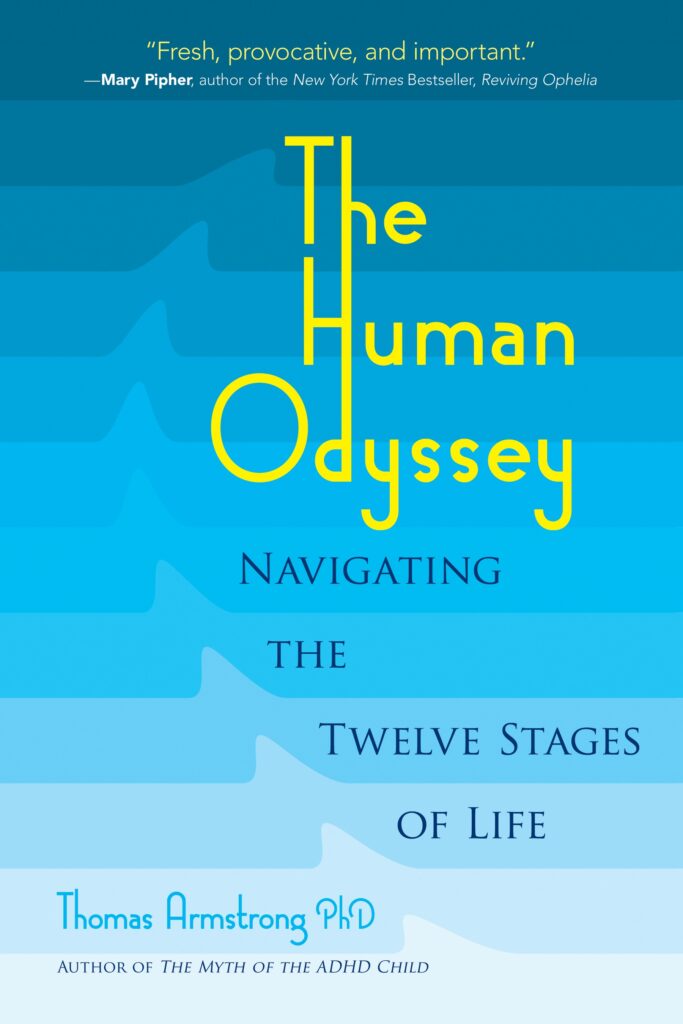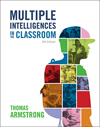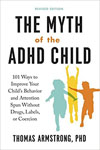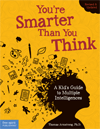
This is video #4 in my 12-part video series on The Myth of the ADHD Child, based on my book of the same name.
This video suggests that ADHD symptoms can be better explained by looking at our educational system than by positing a specific medical disorder. ADHD teacher fact sheets typically list recommendations for helping students identified with ADHD (e.g. give brief instructions, divide assignments into smaller segments etc.). These tips are based a view of education where the teacher in stands front of the classroom while the students are at desks listening, responding to teacher questions, reading boring textbooks, or doing mostly routine assignments. But boring lectures, dull textbooks, and an artificial learning environments are not just worst practices for ADHD kids, they’re worst practices for ALL students. Kids diagnosed with ADHD need learning approaches that are substantially different from this (and so do ALL students). The video describes some of the best practices for kids identified as ADHD including hands-on learning, experiential learning, collaborative learning, vivid media exposure, artistic expression, and project-based learning. The sad fact is that these approaches are rarely mentioned in ADHD fact sheets for teachers or in ADHD books for educators and parents.
See below for a complete transcript of this video.
Transcript of this Video
”Hi, I’m Dr. Thomas Armstrong. This is part 4 of my 12-part video series on The Myth of the ADHD Child. This video is entitled Most Schools Are Brain-Hostile to Kids Diagnosed with ADHD.
Let me preface this presentation by saying that I DO believe that ADHD symptoms exist. I’m not some looney out there saying the earth is flat or something equally crazy. But believe after 50 years of studying this issue, that the hypothesis that there is a specific medical disorder called ADHD causing these symptoms is wrong and that there are many other perspectives that can account for these symptoms. In this video, I look the educational perspective.
This [slide 3] is from an ADHD Factsheet for Schools put out by the Nemours Children’s Heath system, a well-respected multi-state pediatric health care network involving doctors, researchers, medical education, and prevention efforts. Here you see practical recommendations for what Teachers Can Do in the classroom to help kids with ADHD. I should mention that I didn’t search for a fact sheet to prove my case, I just took the first one that popped up on Google. I’ll just read along with you a few of these recommendations.
1.Reduce distraction by seating the student near you instead of a window
2.Teach the student how to use a scheduling and assignment book
3.Give clear brief instructions
4.Break down larger tasks into smaller, more manageable pieces.
I have to tell you that this list is no different from the teacher ADHD fact sheets that were around 30 years ago. It’s as if nothing has changed in education in three decades! These recommendations are like band-aide therapy for a system that is systemically flawed.
The problem with this and other fact sheets like it is that they’re all based on the idea of schooling being a situation where the teacher stands in front of the classroom, the students sit at desks or tables, the teacher lectures and gives instructions, and the students follow the instructions and do the assignments, usually involving a workbook or textbook or test of some kind. Implicitly, the ADHD experts endorse this conventional model of schooling as the default way in which learning should take place, and against which any kind of deviance should be measured.
Missing from those fact sheet recommendations is anything at all that departs from this traditional model. But in fact, it’s a substantially different approach that kids diagnosed with ADHD really need. Before I talk about these, let me talk about what is particularly brain-hostile to the needs of children and teens identified as having ADHD.
First on the list is boring lectures. Here [slide 6] we have Ben Stein playing the role of a high school teacher in the movie Ferris Buhler’s Day Off. This is probably the most famous teacher lecture ever filmed. I’ll just read a few lines, trying (probably futilely) to ape his intonation.
‘’In 1930 the House of Representatives, in an effort to alleviate the effects of Anyone? The Great Depression Passed the anyone? The Holly-Smoot Tariff Act Which raised or lowered? Raised tariffs in an effort to collect more government revenue Did it work? Anyone know the effects? Anyone?’’
I think one of the reasons that this scene is so iconic is because it reflects a certain aspect of truth about teaching and teachers in America. To be fair, teachers aren’t Hollywood actors and most don’t have oratorical flair. The real problem is that the schools rely so much on what’s called . . . Anyone? Anyone? . . . [just joking] . . . on what’s called ‘’frontal teaching’’ that most teachers tend to drift toward monotone whether they mean to or not. The thing is that this is deadly for all kids (remember the student drooling on his desk from the film?), but most especially for kids diagnosed with ADHD. Lecture is a worst practice for kids labeled ADHD because there are so many more interesting things to pay attention to in the classroom than the teacher’s droning voice. I would say that one of the strength’s of kids diagnosed with ADHD is their antipathy toward boredom. That’s a good thing, because when things are boring there’s no aliveness, no zest, no curiosity, no motivation to learn.
A second worst practice for kids diagnosed with ADHD is all the paper and pencil assignments they’re given. Like the lectures, most of this stuff is boring. This is especially problematic in early childhood education, which is when kids diagnosed with ADHD get their introduction to the schooling system, but its deadly at any grade. I’ve called this the worksheet wasteland.
Also a problem are all the stale textbooks students are required to read. These are compiled by committees and lack any interesting authorial ‘’voice’’ so they read as dead words on a page. Kids can’t interact with them, they can’t write in them, so there’s no real personal contact. Again the key word here is ‘’bo-ring.’’
Next is competition, the pitting of one child against another. This happens when the teacher or school creates spelling competitions or academic quiz show formats. But it also happens just generally with testing and grading, where if you didn’t do well, you lose motivation fast. In some schools, educators actually post the test scores of all the kids for all to see. This creates humiliation which is not conducive to motivated learning. If kids lose interest, their attention starts wandering – and I’ve already shown in another video how kids diagnosed with ADHD are great at paying attention to what they’re not supposed to be paying attention to.
Another major problem with the traditional classroom model is that is represents an artificial learning environment. The only places in the real world where these environments exist are in other schools elsewhere. Kids aren’t being prepared for life they’re being prepared to become professors. Well, this usually doesn’t appeal to kids diagnosed with ADHD, and in an environment like this they act up. The work of Sydney Zentall at Purdue University has demonstrated that kids identified as ADHD are actually understimulated, they need more stimulation than the average student. These bare classrooms are just inviting these kids to provide their own higher levels of stimulation through goofing off, daydreaming, fidgeting, and manifesting the symptoms of ADHD. We’re not talking about a medical disorder here we’re talking about these kids being in an environment that does not match their own unique neurological requirements.
A further worst practice is the use of standardized testing. Testing requires the student to deploy an intense central focus on the testing materials. This is the kind of attention that kids diagnosed with ADHD have greatest difficulty with. These students are required to pay very close attention to the questions or problems, and they’re being timed as they do this. This is not a good setting for daydreaming, incidental attention, novelty-seeking, or creative behavior, the kinds of attention that kids identified as having ADHD do best (see my video on this topic elsewhere in the series).
Kids in traditional classrooms have few choices. They’re given assignments, not options. They’re told what to do and how to do it, and their input usually isn’t a part of this setting. They have their courses chosen for them (unless there are any electives, and most schools don’t have many of these). They have their daily schedule fixed, and it’s my way or the highway kid. In some studies, students diagnosed with ADHD did better as far as reduced ADHD symptoms, when they were able to choose their own activities, and also, perhaps not so remarkably, when they were PAID to do an activity.
Finally, traditional schools don’t value artistic creativity in drama, music, poetry, painting, and the like. Here [slide 20] are the requirements for getting into a state-sponsored college or university in California. Notice how English and math require 4 years of coursework, while visual and performing arts require only one year (and even that is better than many other states nationwide). Without art, the creative perceptions and vibrant energies of kids diagnosed with ADHD have fewer ways to find expression.
Now I’d like to look at best practice for kids diagnosed with ADHD. And I should say that you almost never see these kinds of recommendations in those ADHD teacher fact sheets, or even in most books on ADHD. The first best practice is hands-on learning.
Many kids diagnosed with ADHD are bodily-kinesthetic learners to use Howard Gardner’s theory of multiple intelligences as a framework. They need to touch things to learn about them, they need to build things, fix things, manipulate real objects. And they rarely get the chance to do this in traditional classrooms.
They also need experiential learning. They need to get out of traditional classrooms and experience what they’re studying. If they’re taking a biology class, they should be looking at bugs or butterflies out in nature. As bodily-kinesthetic and naturalist learners, they need to walk around as they learn something new.
Also, novel experiences are critical. In video #3 of this series, I pointed out how kids identified as ADHD are novelty-seekers. They don’t do well with same old same old kinds of classroom activities (including lectures, textbooks, and worksheets). Every day kids should be learning something new and novel. Here [slide 26] you see some kids gathered around a 3-D printer. Teachers should start their classroom day with an interesting experience, artifact, media sequence, or other stimulus to get their students’ novelty-seeking proclivities moving in high gear, and throughout the day continue to offer surprising, interesting, unique learning experiences to stimulate the brains of these under-stimulated kids. Students diagnosed with ADHD are often prescribed Adderall, Ritalin, or other stimulants. They should be receiving educational Adderall instead!
Rather than boring textbooks and lectures, kids diagnosed with ADHD need reading material that is motivating, with thrills and chills, with surprise endings, with unique authorial voices, and they should be exposed to a wide range of visually captivating media online, through videos, apps, and through channels. Here [slide 28] you see kids involved in a virtual reality experience. You can see how engaged they are in their learning. That’s a critical word to highlight in terms of what teachers should know about kids diagnosed with ADHD – they need engagement. There’s a whole new world of media out there designed to be engaging, and I’m not talking necessarily talking about video games, although there are some terrific ones out there that engage kids and teach them at the same time.
Kids identified as ADHD need to collaborate with each other, not simply sit like a lump in a desk chair cut off from their classmates (which of course, they will circumvent by passing notes, whispering, getting out of their seat to talk, and other behaviors that manifest as symptoms of ADHD. These kids should be involved in group learning, peer teaching, and collaborative engagement on group projects. They should evaluate each other’s work, play educational games in groups, work both one-on-one and in triads, or other small group situations. Teachers think ‘’oh, but then they’ll start to disrupt things.’’ This happens when kids are presented with something new at the very beginning of a novel learning situation – they get excited and they may goof off to start with, but soon they’re with the program and actively engaged. A lot of teachers use this argument just to sabotage what they perceive as something new, something unknown, something that’s scary to them. But if asked which they prefer, the old lecture, or some collaborative experience, kids diagnosed with ADHD always want the latter.
As I said earlier, kids diagnosed with ADHD need an optimal level of stimulation. They need more stimulation than the average student. This has to do with, among other things, their dopaminergic pathways in the brain. Dopamine is a neurotransmitter that regulates reward and motivation. This means that these kids require more intense rewards to motivate them. Teachers should be looking at their lesson plans, and administrators should be looking at their courses of study and school organization, and asking the question: ‘’how can we make this more stimulating for kids diagnosed with ADHD?’’
Instead of being given worksheets, tests, and reading assignments, kids diagnosed with ADHD should be asked what kinds of projects they’d like to do in a course. These kids [slide 34] developed a soft drink that was healthy and sustainable as part of their class project. This requires collaboration, creative thinking, open-ended exploration, and for kids identified as ADHD would come as a refreshing alternative to same old same old classroom instruction.
And finally, these kids need artistic experiences of all kinds. Every day they should have an artistic experience – and one that’s open-ended, not one that has a specific outcome (e.g. I want you to color within the lines). They should be writing poetry, painting pictures, acting in little dramas, composing their own tunes and rhythms. As I said in video #3 of this series, kids diagnosed with ADHD are like creative beings who’ve not been asked to demonstrate their creative potentials and who are often told to do the most uncreative of activities as far as those worst practices I talked about earlier. They have all this creative energy just waiting for constructive channels to pour their abilities and talents into.
And here’s the final payoff. When teachers teach in these ways, they’re helping ALL kids learn, because the worst practices I covered are worst for ALL kids, and the best practices are best for ALL kids. I’ve often look at kids diagnosed with ADHD as the canaries in the coal mine. They are the ones acting out and telling us there’s not enough air in the educational coalmine for anyone and we’ve got to take action fast to avoid a calamity. Well, the great calamity in education is when we fail to understand how our kids’ brains are organized, and these kids with unique neurodiverse brains who get labeled with ADHD are challenging educators to come up with the best they have to give, ways that don’t involve rearranging the deck chairs on the Titanic, but do involve engaging in meaningful systemic change in our school systems. In the context of this presentation, ADHD isn’t a medical disorder, it’s an educational crisis in the way we teach ALL of our kids.
For more in-depth information about this alternative educational perspective, and other themes of this video series, see my book The Myth of the ADHD Child: 101 Ways to Improve Your Child’s Behavior and Attention Span without Drugs, Labels, or Coercion, available through online stores like Amazon, national chains like Barnes and Noble, and independent bookstores worldwide. It’s also available as an audio recording on Audible. And make sure to watch my other videos in this series. Thanks so much!”
For educators, I’ve written the book ADD/ADHD Alternatives in the Classroom.
This blog post was brought to you by Thomas Armstrong, Ph.D. and www.institute4learning.com.
Follow me on Twitter: @Dr_Armstrong







